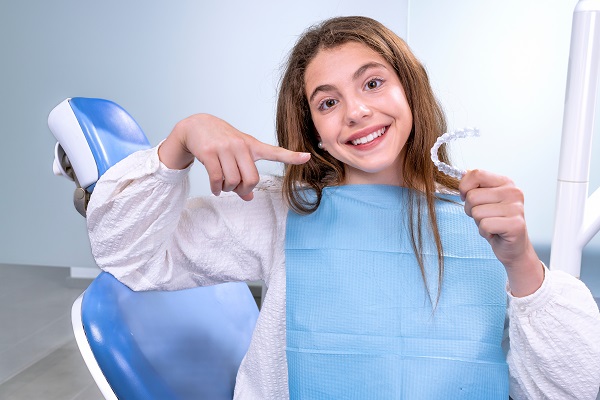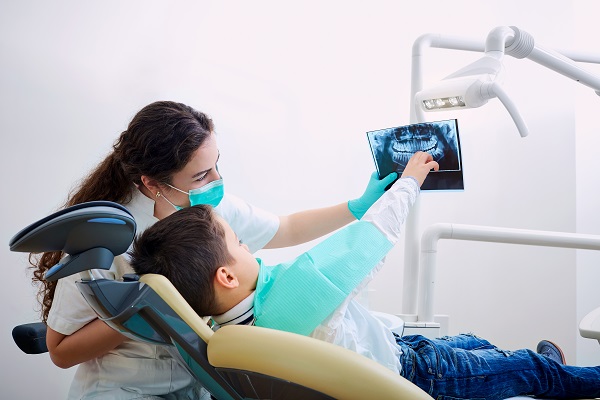Learn About Phase 1 Early Orthodontic Treatment

Phase I early orthodontic treatment can reduce the need for wearing braces or clear aligners long-term during a child’s teenage years. Orthodontists can detect signs of jaw and teeth alignment concerns in children as young as six or seven, and early orthodontic treatment aims to prevent and reduce the need for more extensive treatment during phase II treatments.
An overview of early orthodontic treatment
By learning more about phase 1 early orthodontic treatment, parents can decide when and if to take their child to the orthodontist to find out about treatment. The following is a complete overview of early orthodontic treatment, including what it is, what the benefits are and when to consider it.
Phase 1 treatment explained
Phase 1 early orthodontic treatment is recommended for children between the ages of 6 through 12. Orthodontists may recommend phase 1 treatment for children who show signs of teeth and jaw alignment concerns at an early age. It aims to reduce the need for phase II treatment by increasing the amount of space for permanent teeth to grow in and to correct bite complications while the jaw is still soft. Treatments may include using a palatal expander to allow teeth more room to come through, educating children on daily habits to allow for proper alignment and more.
The benefits of early orthodontic treatment
The primary goal of phase 1 early orthodontic treatment is to reduce the need for extensive treatment during phase II. At an early age, the jaw is still soft, which allows it to be more easily expanded and shifted into a more appropriate position. In some instances, this can prevent the need for braces or clear aligners at a later age. At the least, it can reduce the length of time that braces or clear aligners are required to be worn.
When to consider phase 1 early orthodontic treatment
Early orthodontic treatment is not required for every child. Some children have very minor alignment concerns or no concerns at all and only need to learn good habits to ensure proper teeth and jaw development. However, children who have crowded teeth, bite misalignments or impacted teeth may require early orthodontic treatment. It is encouraged for all children to visit the orthodontist for a consultation visit before the age of 10 to gain a better understanding of the most likely development of the jaw and permanent teeth.
What to expect during the phase 1 consultation visit
During the consultation visit, the orthodontist will examine the patient’s teeth and jaw and may order dental X-rays to see if there are any underlying development concerns. They can recommend treatment if phase 1 is necessary and provide tips on how to reduce the risk of improper permanent teeth growth.
Talk to an orthodontist about early orthodontic treatment
If you are interested in scheduling a consultation visit to see if your child can benefit from early orthodontic treatment, then reach out to our kid-friendly orthodontic team via phone or email today.
Request an appointment here: https://www.drsallysong.com or call The Orthodontic Center Of Wayne - Dr. Sally Song at (973) 696-5220 for an appointment in our Wayne office.
Check out what others are saying about our services on Yelp: Read our Yelp reviews.
Recent Posts
Even though braces are common among teenagers, getting them is a new orthodontic experience for every patient. Teens and their parents tend to have many questions about braces and other orthodontic treatments for teens, when to get braces, and what having braces will be like. Here are some of the most common questions orthodontists hear…
The primary goal of early orthodontic treatment is to prevent and fix bite misalignments. Several causes, including genetics, the premature loss of primary (baby) teeth, and harmful oral habits (like thumb sucking) may lead to such anomalies. Orthodontic abnormalities might be congenital or occur during early childhood. Straight teeth can reduce the incidence of dental…
Invisalign® has changed how willing teenagers –– and everyone else –– are to start teeth straightening treatments. It provides an alternative to traditional metal braces that is virtually impossible to detect. Invisalign® treatments work the same way conventional braces work, the aligner trays exert a force on the patient's teeth pushing their teeth into better…
Oral health is foundational to good overall health. Through the help of an orthodontist and bite correction, difficulties with chewing or speaking can be overcome. The inability to ingest food or clearly articulate impacts both physical and mental health. Bite correction has the potential to change the course of an individual’s health and wellness.Changes in…


